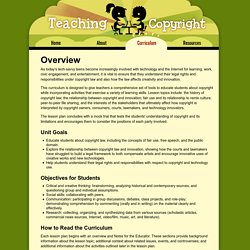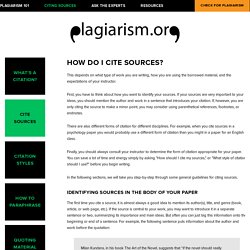

Easy MLA Referencing. Copyright for teachers. Copyright: Definition According to the U.S. Copyright Office, copyright is "a form of protection grounded in the U.S. Constitution and granted by law for original works of authorship fixed in a tangible medium of expression. Copyright covers both published and unpublished works. " Under the law, the individual or entity that owns the copyright of a work has the following rights: - Reproduction: Making copies - Adaptation: Changing a work in some way - Distribution: Giving the work to others - Public Performance: Playing/performing a work in front of others - Public Display:Displaying a work for others to view - Digital Transmission of Sound Recordings: Capturing audio files on the internet and burning CDs/file sharing Items in public domain An item is in public domain when it is no longer protected by copyright because of the age of the work (created before January 21, 1923), or it did not meet copyright requirements to begin with.
What does copyright protect? What cannot be copyrighted? Teaching Copyright. As today's tech-savvy teens become increasingly involved with technology and the Internet for learning, work, civic engagement, and entertainment, it is vital to ensure that they understand their legal rights and responsibilities under copyright law and also how the law affects creativity and innovation.

This curriculum is designed to give teachers a comprehensive set of tools to educate students about copyright while incorporating activities that exercise a variety of learning skills. Lesson topics include: the history of copyright law; the relationship between copyright and innovation; fair use and its relationship to remix culture; peer-to-peer file sharing; and the interests of the stakeholders that ultimately affect how copyright is interpreted by copyright owners, consumers, courts, lawmakers, and technology innovators.
Unit Goals Educate students about copyright law, including the concepts of fair use, free speech, and the public domain. Objectives for Students Assessment. Easy APA Referencing. Citing Sources. Cite Sources — Plagiarism.org - Best Practices for Ensuring Originality in Written Work. This depends on what type of work you are writing, how you are using the borrowed material, and the expectations of your instructor.

First, you have to think about how you want to identify your sources. If your sources are very important to your ideas, you should mention the author and work in a sentence that introduces your citation. If, however, you are only citing the source to make a minor point, you may consider using parenthetical references, footnotes, or endnotes. There are also different forms of citation for different disciplines. For example, when you cite sources in a psychology paper you would probably use a different form of citation than you might in a paper for an English class. Finally, you should always consult your instructor to determine the form of citation appropriate for your paper.
In the following sections, we will take you step-by-step through some general guidelines for citing sources. Identifying Sources in the Body of Your Paper Quoting Material What is quoting? OWL. Coming Soon: A new look for our same great content! We're working hard this summer on a redesign of the Purdue OWL. Worry not! Our navigation menu and content will remain largely the same. If you are having trouble locating a specific resource, please visit the search page or the Site Map. The Online Writing Lab (OWL) at Purdue University houses writing resources and instructional material, and we provide these as a free service of the Writing Lab at Purdue.
For more information about services for the Purdue University community, including one-to-one consultations, ESL conversation groups and workshops, please visit the Writing Lab site. Mission The Purdue University Writing Lab and Purdue Online Writing Lab (OWL) assist clients in their development as writers—no matter what their skill level—with on-campus consultations, online participation, and community engagement.